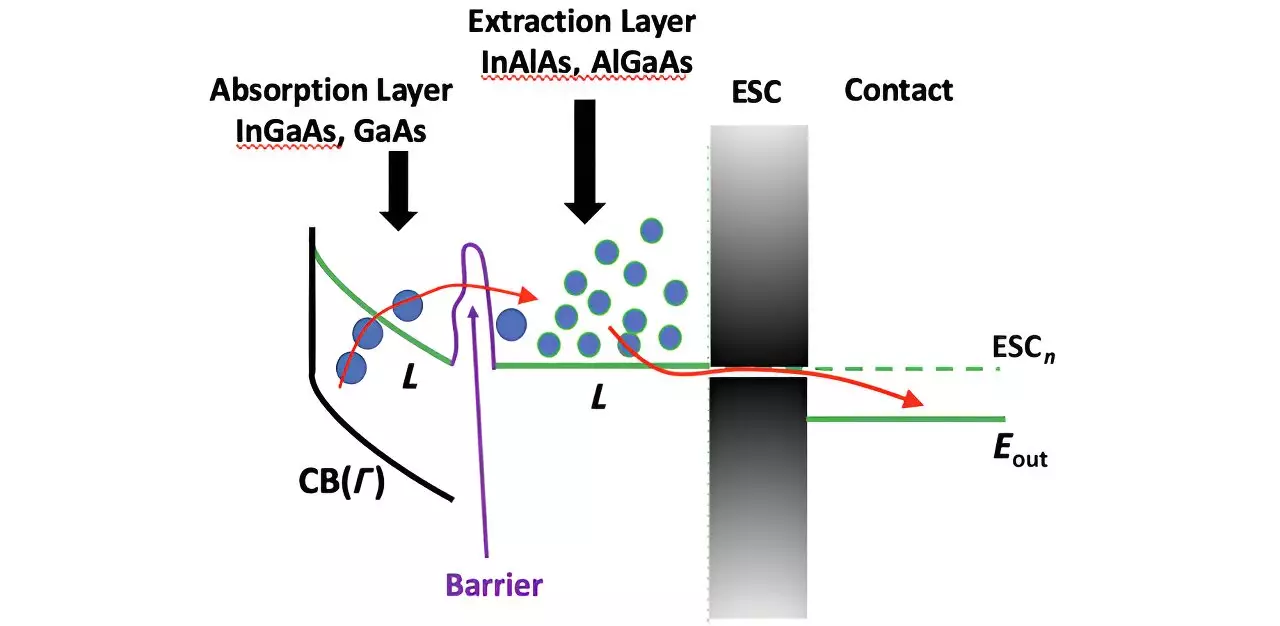Hot carrier solar cells have emerged over the past few decades as a revolutionary concept within the realm of renewable energy technologies. Unlike traditional solar cells that are confined by the Shockley-Queisser limit—a theoretical threshold for the maximum achievable efficiency of single-junction devices—hot carrier cells offer the tantalizing potential to exceed this barrier. The idea revolves around the efficient harnessing of high-energy electrons, known as hot carriers, which can theoretically contribute to enhanced energy conversion rates. However, despite the initial excitement surrounding the concept, tangible implementation has proven to be fraught with challenges, particularly in the efficient extraction of these hot carriers across different material interfaces.
Recent breakthroughs in research have aimed to address key obstacles in hot carrier technology, focusing specifically on the management of hot electrons through the conduction band. One innovative approach involves utilizing satellite valleys in the conduction band for the temporary storage of electrons before their eventual extraction. This technique proposes a significant departure from standard methods; however, complications arise due to the inherent parasitic barriers encountered at the interfaces of heterostructured materials. These barriers, caused by misalignments in the energy bands of constituent materials, complicate the transfer process, which unfolds in real space rather than the predicted momentum space.
Electric charge movement can circumvent these barriers through quantum tunneling, yet the efficiency of this transfer is significantly influenced by the intricacies of band structures. When electron energy levels are misaligned, even slight surface roughness at the interface—measured in atomic scales—can severely interfere with electron mobility, resulting in diminished performance of experimental hot carrier devices.
A recent study published in the Journal of Photonics for Energy has shed light on this complex interaction by employing an empirical pseudopotential method to scrutinize the role of evanescent states in electron tunneling. This technique has allowed researchers to derive energy bands in momentum space that coincide with experimental data, offering a richer understanding of how tunneling works in the context of hot carrier extraction across heterointerfaces.
The findings of this study illuminate a startling aspect of hot carrier solar cells—the tunneling coefficient, which quantifies how easily electrons can traverse barriers, exhibits an exponential increase in certain materials, such as indium-aluminum-arsenide (InAlAs) and indium-gallium-arsenide (InGaAs). The research indicates that even minute discrepancies in the alignment of energy bands between these materials can substantially hinder electron transfer efficiency, corroborating prior observations of lackluster performance in devices utilizing these structures.
Interestingly, the research also highlights improvements in older systems, particularly those combining aluminum-gallium-arsenide (AlGaAs) and gallium-arsenide (GaAs). The architecture of these materials allows for better energy band alignment, increasing the likelihood of efficient electron transfer across interfaces. The presence of aluminum in the barrier fosters degeneracy within lower energy satellite valleys, which is instrumental for maximizing energy conversion efficiencies.
This combined system can achieve an impressive tunneling coefficient, reaching as high as 0.5 to 0.88, depending on the specific constituents of the AlGaAs structure employed. This exceptional electron transfer capability not only enhances the potential of hot carrier solar cells but it also opens the door for exploiting valley photovoltaics, thereby creating pathways toward solar technology that significantly transcends the limitations imposed by single bandgap devices.
The Future of Sustainable Energy
As the global demand for sustainable energy solutions intensifies, the exploration of hot carrier solar cells represents an exciting frontier. The ongoing studies into effective material systems and their properties mark a critical step toward overcoming the efficiency barriers that have long impeded the wider adoption of solar energy technology. With increased understanding and continued innovation, hot carrier cells could be pivotal in harnessing solar power, ultimately contributing to a cleaner and more sustainable energy future for generations to come.


Leave a Reply